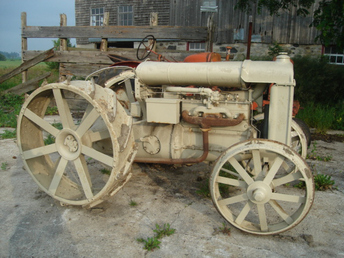Judy Wearing
New User
I'm writing a book about great inventors and their not so great inventions. One chapter features the Fordson tractor (the original, 1916-1928 model). I'm having some trouble understanding how it worked. Apparently it had a bullwheel - which i understand horsedrawn implements had - that dug into the ground, and when it spun around, it worked the implement. Questions: are there other names for this gadget other than bullwheel? Is this how the Fordson operated? Is this how all tractors operated prior to the International Harvester's PTO? Rumour has it the Fordson tractor was difficult/dangerous to operate. Anyone have any info on that? First hand experience? Photos? I'd love to quote a tractor enthusiast in the book, so if you reply let me know if you are okay with that and include your name and how you want me to describe you (Tractor Hobbyist, Tractor Engineer, or whatever) so I can include that too. Thanks!!!


